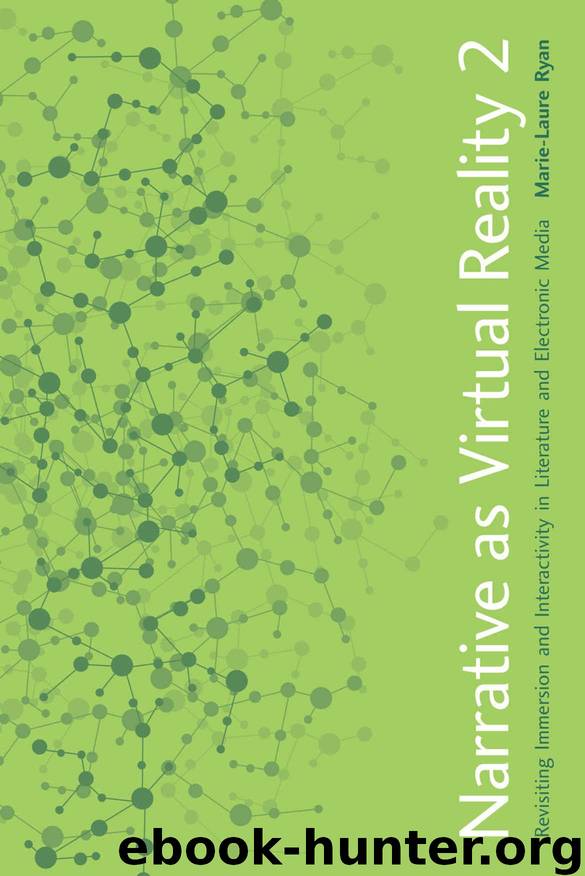Narrative as Virtual Reality 2 (Parallax: Re-Visions of Culture and Society) by Ryan Marie-Laure

Author:Ryan, Marie-Laure [Ryan, Marie-Laure]
Language: eng
Format: azw3
Publisher: Johns Hopkins University Press
Published: 2015-11-11T16:00:00+00:00
Figure 5. Grafik Dynamo, by Kate Armstrong and Michael Tippett
Grafik Dynamo subverts the reading habits associated with graphic narratives in multiple ways. We expect the relation between image and text in every frame to be narratively significant, which means that it contributes to the construction of a coherent storyworld, but here the juxtaposition is the product of random selection, a procedure that cannot produce narrative meaning, except by extraordinary chance. A sequence of frames should represent the same world and correspond to a temporal sequence of events, but here there is no visual unity or semantic relation between the frames. The diegetic narration in the text boxes at the bottom of frames usually would provide the context for the dialogue or thoughts represented in the speech bubble, but here the narration and the dialogue are often disconnected—the content of the bubble may change, while the bottom text remains the same. Frames should be read from left to right, but here the eye is attracted to the frame affected by the most recent transformation, and this results in a parsing of the display that moves randomly in all directions. I could go on and on with these violations of familiar reading protocols. But what does Grafik Dynamo offer in exchange? Readers (or viewers) can concentrate on the text alone by reading it as a parody of “Superman” style comics, they can focus on the images by asking what kind of story people are trying to tell by posting them on the Web, or they can treat the random pairing of text and image as a stimulant for the imagination by trying to create their own stories out of individual frames. But the short-lived appearance of the data does not give the user sufficient time to construct a narrative context for every frame; reading in this case will not be a systematic processing of all the materials presented by the project but a highly selective activity. The best way to use Grafik Dynamo is to run it in a background window and to make quick grabs to look at its current state, hoping that randomness will occasionally produce interesting couplings.
Download
This site does not store any files on its server. We only index and link to content provided by other sites. Please contact the content providers to delete copyright contents if any and email us, we'll remove relevant links or contents immediately.
| Books & Reading | Comparative Literature |
| Criticism & Theory | Genres & Styles |
| Movements & Periods | Reference |
| Regional & Cultural | Women Authors |
4 3 2 1: A Novel by Paul Auster(11047)
The handmaid's tale by Margaret Atwood(6852)
Giovanni's Room by James Baldwin(5877)
Big Magic: Creative Living Beyond Fear by Elizabeth Gilbert(4723)
Asking the Right Questions: A Guide to Critical Thinking by M. Neil Browne & Stuart M. Keeley(4574)
On Writing A Memoir of the Craft by Stephen King(4213)
Ego Is the Enemy by Ryan Holiday(3991)
Ken Follett - World without end by Ken Follett(3972)
The Body: A Guide for Occupants by Bill Bryson(3800)
Bluets by Maggie Nelson(3709)
Adulting by Kelly Williams Brown(3669)
Guilty Pleasures by Laurell K Hamilton(3586)
Eat That Frog! by Brian Tracy(3514)
White Noise - A Novel by Don DeLillo(3434)
The Poetry of Pablo Neruda by Pablo Neruda(3366)
Alive: The Story of the Andes Survivors by Piers Paul Read(3310)
The Bookshop by Penelope Fitzgerald(3225)
The Book of Joy by Dalai Lama(3217)
Fingerprints of the Gods by Graham Hancock(3212)
